Roses of Cordes: features, types and cultivation
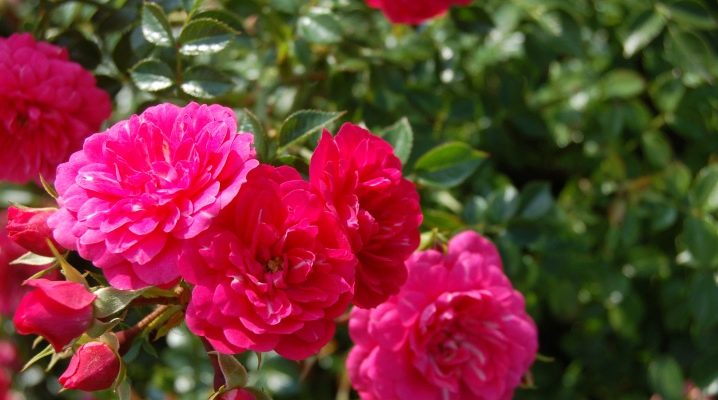
The best roses among the rest today are the roses of Cordes. Their assortment is incredibly rich. You can find a wide variety of roses, with different characteristics, shapes, sizes and colors. But in order to do this, you need to know what types of Cordes roses exist and their features.
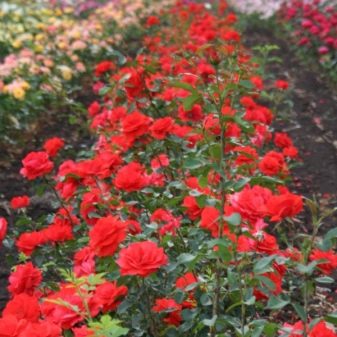
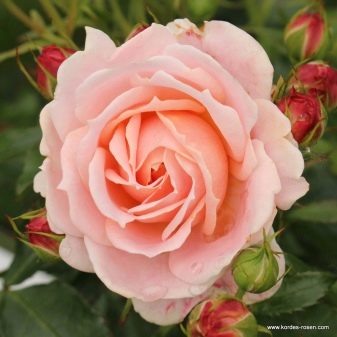
History
The creator of the Cordes roses is Wilhelm Cordes. He devoted his whole life to growing, breeding roses, breeding new varieties, working on the characteristics of his flowers, improving them every time. The Cordes company was founded in 1887.
He originally sold various varieties of French and English roses. But after a while he became interested in crossing and breeding new varieties of roses, that is, breeding.


Cordes wanted to breed roses that will differ from other varieties in unpretentiousness., frost resistance, disease resistance, endurance, by combining varieties that are rarely used in breeding. The first variety was developed after the First World War.
This variety of roses came to Russia only after the collapse of the Soviet Union.
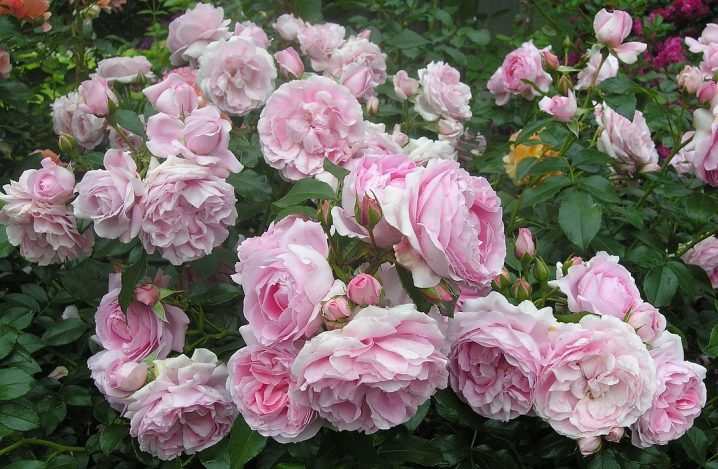
Distinctive features
For its characteristics that distinguish the roses of Cordes from others, his company received a special sign. All flowers from this company have received an ADR certificate (German Recognized Rose). Such a certificate can be obtained by plants that have passed tests for winter hardiness, resistance to pests and various diseases, as well as those that have received the highest assessment of appearance and aroma.
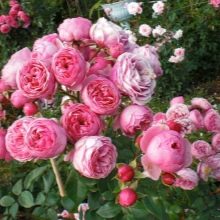

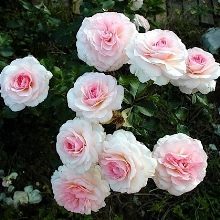
The main advantage of these flowers is that there are winter-hardy varieties among them. They can adapt to any climate and any weather conditions.
Externally, the flowers form a bush from 1.5 to 3 meters. The bush has large, bright dark green leaves. The flowers are also large, peony-shaped, collected in inflorescences.
Another distinctive feature is the packaging of Cordes flowers. The company protects the seedlings - namely their roots - with a metal mesh. This method helps to preserve the bush and protect it during planting.
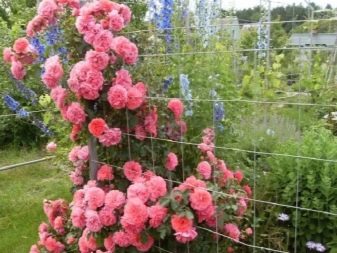
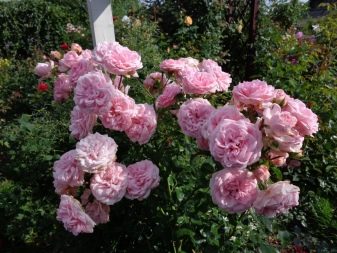
Varieties of roses
The flowers of Cordes can be divided into several groups.
Floribunda
They were bred as a result of combining nutmeg, tea and polyanthus roses. Floribunda are winter-hardy flowers and are immune to many pests. They bloom for a long time, have the most varied bright colors, and are decorative. They are unpretentious, so planting and caring for them is easy. They begin to bloom in the middle of summer and continue until the end of autumn. They are good for cutting, so they are often used to create bouquets.
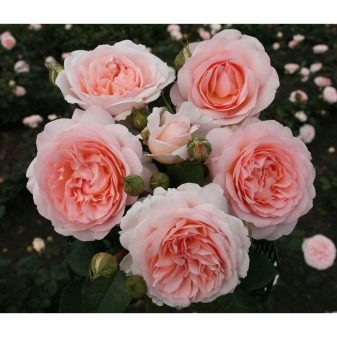
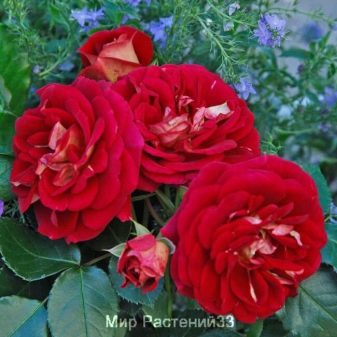
Hybrid tea
Most popular of all groups. We took the best characteristics of remontant and tea roses. From tea: shape, delicate aroma and the ability to bloom profusely and continuously, and from remontants - hardness and winter hardiness. This variety has the richest set of colors and shapes.

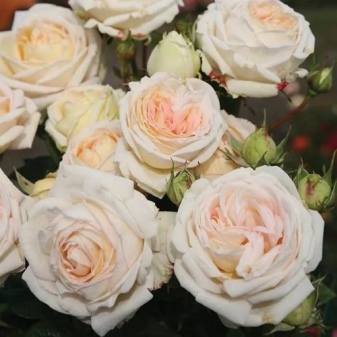
Groundcover
Most often used to decorate walls, lawns, slopes, and create hedges. They grow abundantly and for a long time from early summer to autumn. Unpretentious. Resistant to various diseases. They multiply easily and suppress the development of weeds from two years. They are not very winter-hardy, therefore, in the northern part of Russia, such flowers need to be covered and insulated.
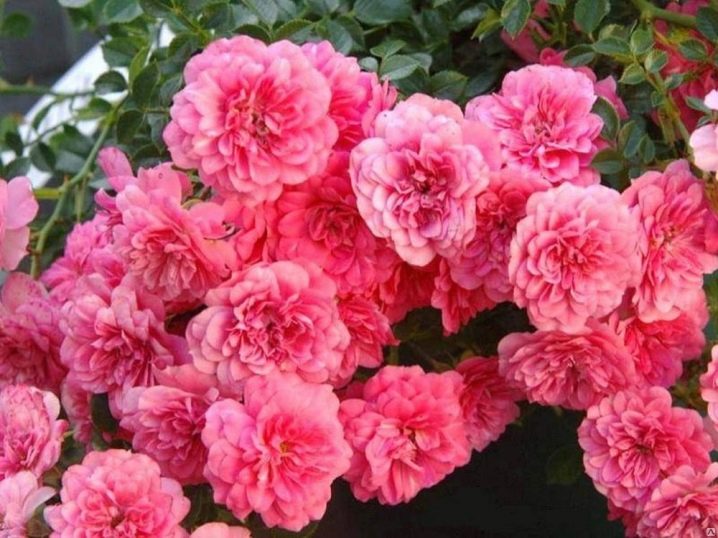
Climbing
Roses that are most often used in landscape design.
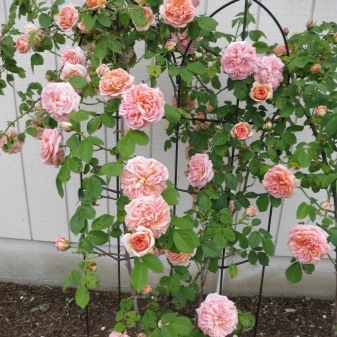

Park
Lush, double roses have up to 150 petals, which is not characteristic of any type of rose.They bloom profusely, grow not only in height, but also in breadth. The bush can grow up to 1.5 meters in height. The colors are very diverse: from white to dark purple.
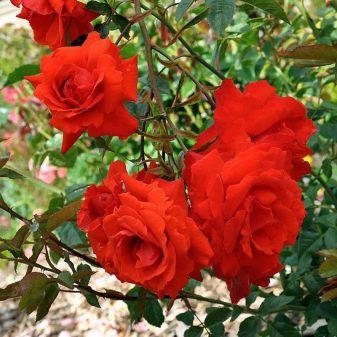

Types of roses
There are many types of Cordes roses. They almost do not differ in basic features, but all of their characteristics may be different.
- Novaliz. Floribunda flowers with 10-centimeter thick purple buds. The bush grows up to 80 cm. It has a light aroma.
- Der Hofnung. A bush with yellow-red double flowers with a pleasant aroma. It grows very quickly in a width of about 40 cm.It can be no more than 70 cm in height.
- Crown Superior. It is considered the most beautiful white rose. Has a creamy white color. It usually grows in breadth up to 2 meters, and in height - up to 3 meters. This variety is suitable for any climate and any weather: drought, rain and the like.
- Illusion. Lush, double, bright red, 9 cm flower. It grows up to 3 meters, weaves along the ground. It blooms long and profusely from summer to late autumn. Rain is not dangerous for him.
- Angela. A kind of floribunda. It has crimson flowers with a pale pink center.

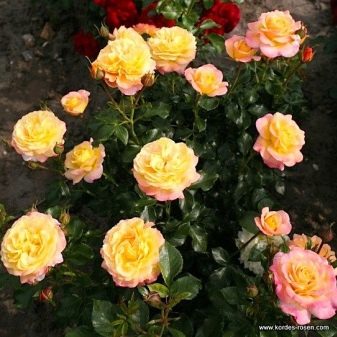

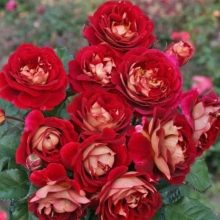

- Adzhimushkay. These roses were bred in the Crimea. A climbing rose reaching 3 meters in height. It has large, lush, red buds up to 13 cm in diameter. The variety is suitable for decorating a plot, house, walls, supports.
- Quadra. Flowers with bright cherry-colored buds. They are so named because the petals are clearly divided into four equal zones. The problem with these colors is that they fade over time when exposed to sunlight.
- Athena. Best of all, oddly enough, it took root in Australia. The best cut flowers. They have large double buds 10–12 cm in diameter. The color is creamy white with pink edges. The height of this bush can be no more than 1.2 meters, and the width - no more than 50 cm. With good care, it does not get sick and, with high-quality insulation, it tolerates frost perfectly.
- Sympathy. Tall with large dark red flowers and long leaves up to 19 cm. Unlike the tender Quadra, the petals of Sympathy are sun-resistant and do not fade. This plant can be used for climbing hedges and other elements.
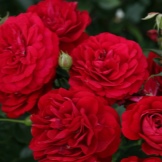
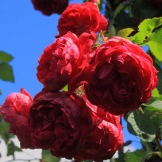

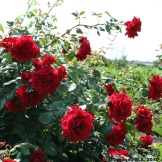
- Souvenir de Baden-Baden. It attracts attention by the fact that it changes its color during the entire flowering period. Buds from 12 cm in diameter have a pale yellow color with a pink tint.
- Robusta and Weisse Wolke. The difference between them is only in color: Robusta is cherry red, and Weisse Wolke is white and cream. Tall plants can reach 2.5 meters. They can easily endure even severe cold and frost. Can be used for hedges.
- Westerland. Roses with large fluffy flowers of apricot-orange color with a strong aroma. It grows up to 2 meters.
- Blue fight. View of roses from the park group. Low shrub - grows up to 1.5 meters. They bloom very densely with pink-lilac flowers.
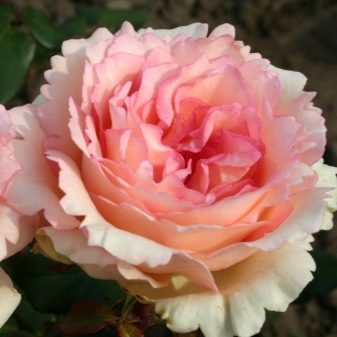
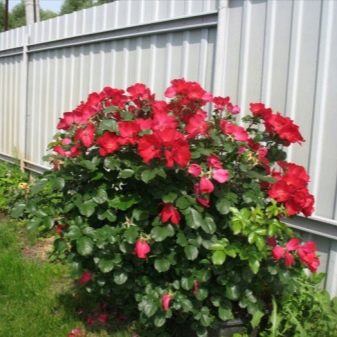
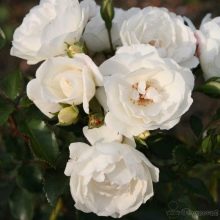
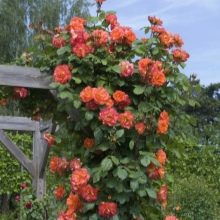
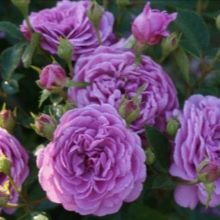
- Larissa. A small ground cover rose with a bud size of 5–6 cm in diameter, which has a creamy pink color.
- Anniversary of Cordes. The Jubilee flower was created in honor of the 125th anniversary of the company. It has yellow buds with red edging.
- Diamond. Bright red buds with an orange tint. The size reaches 9 cm. In height it grows up to 1.5 meters, in width it grows up to 70 cm.
- Alchemist. It attracts by the fact that it changes its color due to temperature changes: it varies from bright yellow to bright peach. It grows up to 2-3 meters.

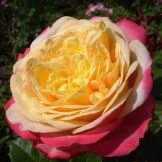
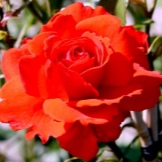

- Limbo. A small shrub with small flowers, of an unusual color: the buds themselves are yellow, and green at the edges. Height can be no more than 1 meter.
- Flammentans. Cordes himself considered the flowers of this variety to be the best red-flowered hybrids, but he did not like that this variety blooms only once a year. The bush can reach 3 meters in height, the size of the flower is 8 cm. Resistant to any weather changes and changes.
- Crimson Glory. Terry, bright red flowers. One branch can have from 3 to 6 flowers. They have a pronounced aroma.They bloom several times a year.
- Lily Marlene. Abundant shrub with bright red flowers. The size of the buds reaches 8 cm. During the flowering period, it seems that the whole bush is in flowers, since there are from 5 to 10 buds in one brush.
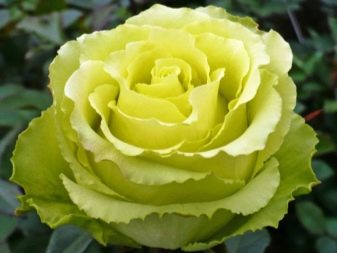
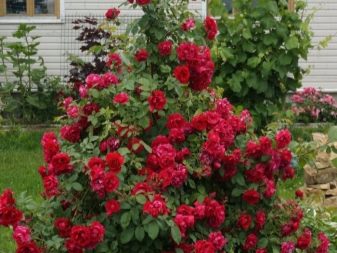
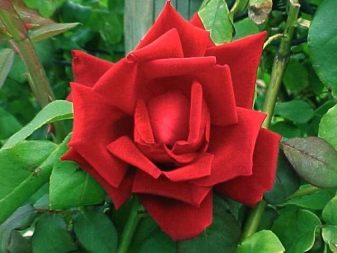
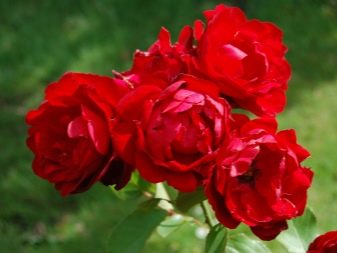
There are many more varieties of Cordes roses, but others are not as popular with buyers.
How to plant?
Roses of Cordes are easy to plant, grow and care for, and this is their main advantage.
It is best to plant roses in May - June or September - October. But it is still better to do this in the spring, otherwise there is a possibility that the seedlings may not take root until the onset of cold weather.

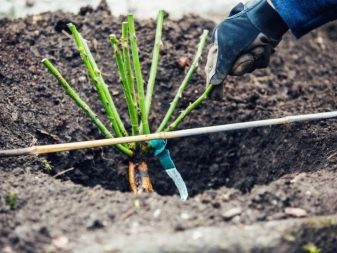
Do not forget that roses love the sun, so you need to plant them in bright, well-lit places.
The soil for planting, of course, must be prepared in advance. Immediately before planting, you need to dig a hole 1-1.5 meters deep and process it (fill in rubble, add mineral fertilizers and earth). It is also necessary to cut bad shoots before planting.
The distance between seedlings should be at least 50 cm.


How to care?
Basically, these plants do not require special care, they are unpretentious. The only thing is that these flowers require pruning of old shoots in autumn and spring.
For the winter in the northern regions, roses must be insulated, regardless of their frost resistance.
The best winter-hardy varieties for the Moscow region
All the roses of the Kordes company are quite frost-resistant, but there are varieties that require special attention.
- Parole is a bush with dark crimson buds. It grows profusely, grows strongly. The height reaches 90 cm.
- Beverly - bright pink double flowers with a pronounced aroma. The height of the bush is about 60-70 cm.
- La Perla is a strong flower, resistant to both the scorching sun and extreme cold and frost. In height it can reach from 70 to 80 cm.
- Kupferkörnigin - bright yellow flowers that do not fade in the sun. Suitable for pruning.
- Marvel is a rose hybrid of red, yellow and orange shades.
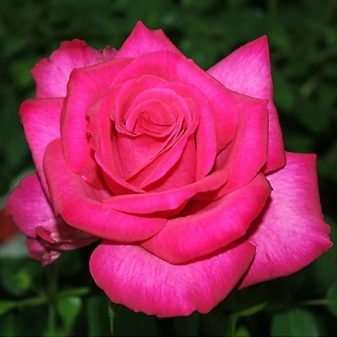
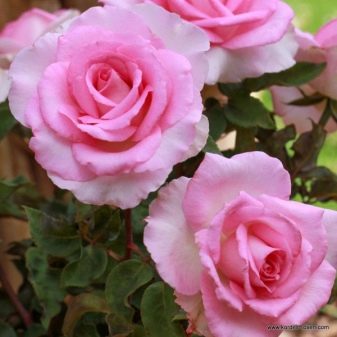

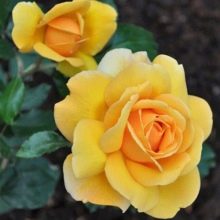
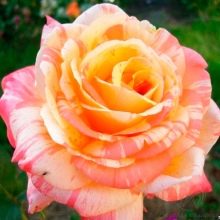
These are the most frost-resistant types of Cordes roses, but breeders still recommend insulating roses for the winter, however, they leave it at the discretion of the owner of the flowers. The main thing is to be able to properly process the rose and plant it, provide it with the necessary care and attention, and then the rose will be able to bloom abundantly and for a long time.

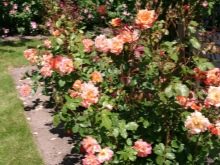

Customer Reviews
Mostly, customer reviews are positive. Everyone notes two main advantages of Cordes roses: frost and winter resistance and immunity to many diseases. But even despite the fact that these plants are resistant to many misfortunes, experienced florists recommend processing plants and fertilizing them, because roses are immune to many diseases, but not all.
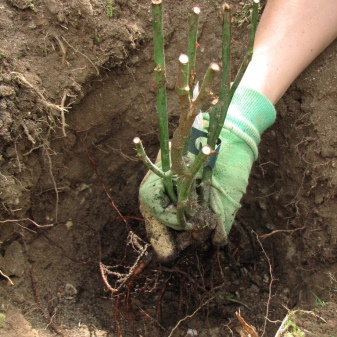
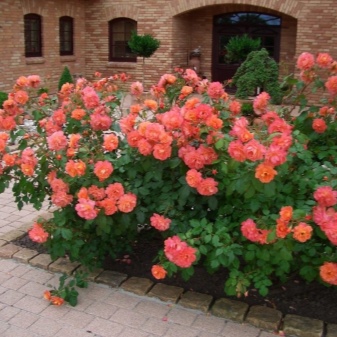
How the roses of Cordes differ from others can be found in the video below.

































































































The comment was sent successfully.